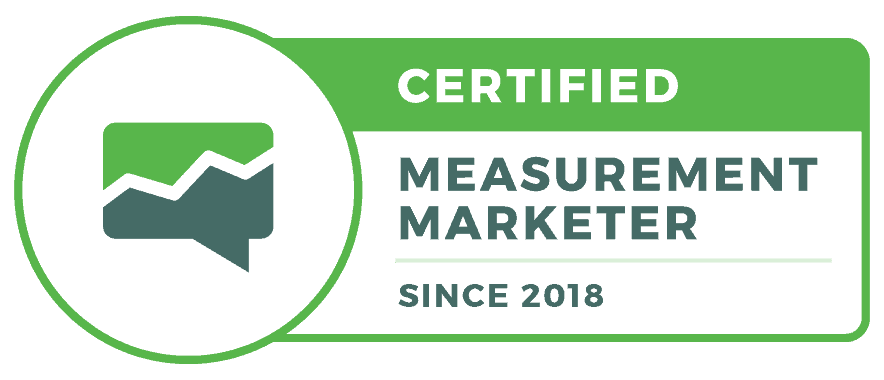Unlocking CRO Building
In this inaugural Metrics and Methods webinar, Ryan Lavander, the host and founder of Rednavel Consulting, introduces this series focusing on analytics and experimentation.
Our Metrics and Methods webinars will occur every Wednesday at 3:00 PM Mountain Time, addressing diverse topics within the Google stack, including Google Tag Manager, GA4, Looker Studio, BigQuery, and AI.
Ryan shares a practical example of implementing a three-question qualitative research survey on website exit intent, aiming to understand your goals, task completion, and suggestions for improvement.
The webinar concludes with a preview of the next session’s topic, qualitative research, and a call for feedback and topic suggestions from you, our participants. Ryan briefly mentions his upcoming workshop on generative AI for data analysts in Berlin.
All right, uh, welcome to the first Metrics and Methods webinar. I am currently talking to myself because it was a busy week and I didn’t do any marketing for this, and so no one would know that there’s a link to join this webinar.
So, uh, the first one will be me, myself, and I. Uh, but hopefully there will be more for the future ones. I’m sure there will be, I’ll be sharing this on probably LinkedIn mainly, but, uh, many different places to sign up.
So it’s called Metrics and Methods for a reason. Um, is some of you may know, uh, my name is Ryan Lavander and I run things at Red Navel Consulting. What we do at Red Navel Consulting is metrics and methods.
It’s analytics and experimentation. I called it Methods with experimentation because, um, you know, as much as we, I even call experimentation and at CRO because, uh, experimentation is larger than CRO, I also call it analytics measurement from time to time because it’s also broader. Um, not every B two B SaaS site has enough traffic to be able to do CRO, like AB test.
So experimentation is more of a mindset and a process and methods to, uh, make sure you’re using data, uh, testing experimentation to avoid risk and to make better decisions. So that’s why it’s called Metrics and Methods. So, uh, we’re gonna have one topic per week, and we’re gonna meet at the same time every week.
It’s gonna be 3:00 PM Mountain Time on every Wednesday. It’s just gonna be a, uh, you know, kinda like a workshop Wednesday. I’ll probably think of a different name because there are plenty of other people who call it exactly that. But the point is, is, uh, we’re gonna be covering a topic every Wednesday, and the goal is a hundred percent to help you guys, whoever is joining, uh, if you want to get unstuck, whether it’s a strategic, um, question, a more tactical question like we will cover both lenses. Excuse me. We’ll probably cover a bit more on the strategic side of things, just because I can only get so tactical on so many different platforms.
Calling it some metrics and methods pretty broad. So I don’t want to be an expert in absolutely everything. There’s only so much time in the day tactical things that we can, that I’ll be able to talk more in-depth about will be, uh, in the Google stack largely. Uh, so it will be, uh, Google Tag Manager, GA four.
Probably gonna be a hot topic for the foreseeable future with some people. Some of, the reasons you should be using GA four explore reports and some reasons you shouldn’t use those, and you should use BigQuery or Looker Studio or something else. Uh, Looker Studio, uh, previously known as Google Data Studio will be covered as well.
Big query I mentioned, uh, probably some transformers. We may touch on some DBT concepts. Again, all strategic there. I don’t think it’s gonna be useful for anyone to show different data lineage joins and nerdy stuff like that.
But I think especially with artificial intelligence, it’s gonna be very, very useful to talk strategically about how to use it, um, and how to assist in the process. I’m gonna be doing a workshop with Jim Stern, uh, in Germany in Berlin in just over two weeks, um, at the Marketing Analytics summits. Uh, and it’s gonna be on generative AI for data analysts. So, spoiler, just go over to Berlin, no big deal. Um, if you want to, uh, uh, learn more about, uh, how data analysts should be thinking about generative ai, Jim’s gonna cover more of the strategic lens. I will be covering the more tactical and how to use this lens, um, on data collection, transformation, visualization, et cetera.
So looking forward to that. But enough talking about the, you know, preamble of what this is gonna be. I hope to see you guys on a future session. If I couldn’t, uh, if you couldn’t join, uh, today, which we didn’t, of course, based on me, just me being here, I will of course record these.
And so I also just wanted to leave with the, the reason why I’m doing this is I believe the really, the way that most people should sell, and at least how I like being sold to, is through education. So I believe firmly that, um, there’s, there are very few scenarios where I, um, sell, like in terms of a, like, I, I sell through education, and I, I have to, and I want to, but I, I have to because the stuff that I do is, is fairly complex.
And so if someone doesn’t know what I’m doing, I just have to educate for them to be able, to understand what I’m even talking about and to simplify things. And so, um, that’s my, my mantra here is I just love to teach. And I, that’s the only way I like to sell, is through teaching. Um, I could probably make more money if I sold, sold, but, um, it’s what I believe in. Um, and, um, so this is me teaching and it’s a hundred percent free value. And, uh, please, if you have suggestions for topics or if there’s something that you thought I could have touched more on, um, I would, uh, love to hear any feedback.
I’ll always welcome take a quick drink of water here and we’ll get ready for the first topic. And today will be the only day you will see me in my, um, you know, cubicle here in WeWork, my phone booth, so to speak. Um, I just, uh, rented it for a month.
I’m doing a pretty large home office transformation, and I didn’t want to be rushed till I could do it all in one week. And so I’m co-working across the street at WeWork while I, uh, build my home office up. And, um, probably will be done. It’s, it’s been in a process already by next week for you guys to see, but we’ll see when that’s done. But it will be a pretty, uh, good setup and, um, it’ll be fancy schmancy, you’ll, you’ll get to see a little bit more. So anyway, today’s topic is going to be, um, a little more, more broad in general, but I’m gonna give you some tactical advice on how to, uh, implement.
But it will be around qualitative research, and you’ll hear this sentiment quite a bit with me. And I am probably one of the things I’m best at is quantitative data collection, transformation, and visualization with our, uh, our blueprint process, which is a defined process that uses four D’s development, uh, excuse me, uh, discovery, design, uh, deployment, excuse me, development, deployment, discovery, design, development, deployment.
So it follows this four D process to be able to, to your data project to the next level, especially if you’re using a data pipeline and it’s gonna be touched with multiple systems. Um, that’s all fine and great, and it’s super powerful and amazing to be able to have that end-to-end, um, full-funnel visibility. Um, but most marketers think that’s gonna be their answer to their marketing.
Oh, if I just knew where the leads, where the closed ones were starting at, it’s useful, absolutely, and I love what I sell, but it’s becoming more and more important, and it will only get more and more important as privacy becomes more of a thing as, um, the complicated web becomes more of a thing.
Like, think about how many journeys start with chat GBT now, uh, or just generative AI in general. Uh, a lot of mine do, I don’t even use Google for some things. I used to, that used to start with Google and used to be more trackable, uh, and they aren’t now. Um, so it’s gonna get worse. But I, I want to educate and, and, and communicate the importance of qualitative research and how it doesn’t have to be these very arduous and long research projects.
I think a lot of people think of research and they have maybe like a trigger, um, word, uh, that they think long, they think expensive. They think, um, you know, competitor research and, and a long process. Uh, they think that it’s, it’s gonna take a while to get insights and to act.
And it doesn’t have to be that way. It shouldn’t be that way, especially to start and to get buy-in for future research projects. And so, one of the ways that I like to think of scalable, I think the magic word for this webinar, I’ll have a magic word every time, scalable qualitative research is the magic word here because most people don’t use scalable with qualitative research together.
So I want to give you, um, and something to, to use, um, On your website today that will be actionable. Take one thing away from this, this workshop, uh, this, this webinar. Um, I always want you guys to be able to take one thing away and do something. This is my advice for you guys to do. I’m gonna share my screen, and I think I still have this live on my site.
I guess we will find out if I do or not. Uh, let’s go toRednavel Consulting. And this, uh, should be, so this is something I have as a, uh, an intercept poll or often called or just a popup, but, uh, not a marketing popup.
A qualitative research popup side comment is that I think marketers should always use speaking in absolutes is dangerous. Most of the time use qualitative research tools like Hotjar, Mouse Flow, Lucky Orange. There is a Diamond dozen content square.
If you have a bigger budget, should use a simple intercept poll to understand the fears, uncertainties, doubts the fuds or the jobs to be done, or just the different intent levels of their users before they just run to give someone 10% off.
I see the popups way too often when they’re just cutting their margins on an e-commerce site, or they’re offering something before they even know if the user wants what’s on the page or not. And so, uh, I think it’s a, it’s a practice that more people should be, should be doing.
So when I go to exit here, uh, let me try this incognito just to see if I’m already cookie from Hotjar. I think there was a little bit of a rule in here where it needs to be more than, there we go, more than an X amount of time or scroll.
I don’t wanna make people upset. But here’s the first question of this. Um, this is like three Q survey. Um, I’ve read some newsletters recently. I was binging some newsletters and catching up and, uh, Avinash Kasic, um, I forget the, uh, trust marketing analytics insights, I believe, or maybe it was TMAI, I think is the abbreviation, but it’s a very good newsletter. This was one that I got inspired from. Um, and so, uh, give credit where credit is due to Abinash, but this is something I’ve modified and I appreciate this, uh, way to glean some insights. Um, so the, there’s three cues, three questions. The first question is probably the hardest to set up.
And the reason I do exit intent is we want to catch people on their way out. Uh, they could have either converted or just left the site. Most people are probably just leaving the site.
I don’t wanna interrupt their process, right? So this is probably as least intrusive as possible. So the first question, what is the purpose of your visit today? So the concept here is to map your goals of the site, not just your overall goals, like buying or becoming a lead, but your micro conversions as well, like learning about services.
Like that’s not probably, a goal in your Google Analytics, right? A hard to understand, well, when have they learned about services? Is it like a 75% scroll and two minutes on the page on a service page, then they learn about my services? Yeah, you could set that up.
But the point is, is to make sure you’re not, like, why I say that is you should be setting up your goals to, uh, we use an ACE acronym, awareness, engagement and conversions, and not just your purchases or your leads. If you do that, it’s gonna make you rely on attribution tools much more than you should be anyway, and very much in that, uh, a future topic. But, um, I and Google Analytics is deprecating more attribution models, and I like that. Um, I link, I like the last click, but only if you set up more goals. So make sure you’re looking at all of the different goals of your site. Um, so like I say, this is the hardest because most people haven’t thought deeply about this of, well, what are the different things people are looking to do on my site?
And just start with something good enough to get going, and then you can always make it better. Okay? So don’t overcomplicate this for me. I could probably have more radio option buttons here, but the whole point of this, there’s a little bit of CRO behavior design wizardry in here is if you ask them with an open field that’s more friction, and they would have to think more about, well, I came here for like five different things, and which one of those five should I put? And the point of having one select here and not multi-select is we just wanna know the most important one, and they’re probably gonna cite the most important one by default.
So that’s kind of, the hidden point here. And we’re using Shel Dini’s principles of consistency and commitment. Once you start something, you’re much more likely to finish it. So once they start something, let’s say I was here to learn more about Red Enable Consulting and this crazy guy seeing videos to see if he’s legit or not. Um, the next question, because there are three questions, right? There’s not just one.
If they answer the first one, they’re much more likely to finish. Were you able to complete your task? Uh, let’s say, yeah, I was, there’s a lot of videos on my site. I hope you get to know me.
I would hope they were able to complete that. Um, nice and my thinking face here, uh, don’t add that. If you actually wanna get a better response here, that’s probably a bad idea, but how can we create a more delightful experience?
And so testing on live webinar and let’s do a little cool face emoji, but that is it. Those are the three questions. And we got that from a user now, which is great.
We got qualitative feedback that never would’ve shown up in Google Analytics. We, the point of showing something like this is that there are so many different goals of users coming to your site. It’s not, um, oh, you know, 98% of people didn’t buy or didn’t become a lead. You know, your conversion rate’s 2%. That’s terrible. Well, guess what? You know, maybe 60% of those people had no intention of converting.
Maybe they wanted to figure out, my privacy policy or use my UTM builder or, you know, maybe they wanted to use a tool and they just came back for that. Like, the point is, is to better capture the intent of users, uh, because there’s so many different options and not just one option. And so, um, that leads us to, and this is one I did for a client, and of course to use ChatGPT to just,
I was gonna create this as a visual and looker studio for their overall dashboard, but I’m like, you know what? Um, this seems pretty easy to just get a quick answer, and took me a lot less time.
So this was interesting for us because they have a, a site where you log back in to, uh, make purchases that way. You log back in for support, they have chats. Uh, this site, you know, has multiple different purposes. And so the blue ones, um, well, their answers are based on, uh, what they selected in terms of the radio button and then were we able to complete the task or not. Blue is bad and red is good. Um, it was very interesting to me, uh, of the people who, even the return people, existing customers, I asked the question of, are you here to purchase for your first time or as an existing customer, it was even worse.
So eight people were able to complete the task as existing customers and two people were not able to complete the task. Like, and this is something that you could, you could probably understand the video recordings to like go to wash those two people to see how do they not know where to buy again.
But it was just really interesting to me to be able to see the delta between, okay, how many people can do the thing that they came to do or not able to do the thing. It’s super simple. And that’s the kind of the whole concept here. Uh, and this was, uh, a screenshot from Ash’s newsletter, which inspired kind of this idea, this task completion rate.
This is probably shown in a better visual here. Um, and you can see red as an example of a bad scenario. Well, that’s another, but let’s look at one that’s more descriptive.
Research a product to buy in the store. So, um, there were, uh, it looks like 80, these are the percentages. Uh, so 82% of the people were not able to do that, which is like, wow, how is that, uh, even possible? You know, where do we not have this? In the navigation?
These questions start to arise further and it helps you better understand that increasing your conversion rate is about a user experience and not about making, taking away the menu, and having a squeeze page and an aligning page to increase your conversion rate. It’s about what is the point of the user’s visit, and are doing a good job of that.
And this is great for thinking broader about your overall, your overall like business and not just your marketing efforts. There’s product, there’s support, there’s development, there’s other things that they wanna be able to know. Are we doing our job?
And again, this relates to the user experience. And so, uh, I was inspired by this. Um, this was live on client sites, um, and just kinda shared that anonymized data. Um, and it was insightful and we’re, we have this concept of a universal id. Um, I feel like you get to that true analytics, uh, nirvana. And so, um, hopefully, this was insightful.
Start your own three Q survey, um, with the, um, you know, what did you come here to do today? Have those radio button options. Are you able to do that, yes or no? And then basically the same question for either yes or no, it’s how can we make the, make, make this experience better for you? So, uh, take that one thing, go ahead and do that. Let me know what, uh, what happens with that and how that goes. Maybe shoot me a message on, uh, LinkedIn if you have any feedback on, uh, hey, I ran into a problem,
So like when Hotjar shows something, we can pass that ID, um, really into BigQuery, but with GA4 data, we can be able to understand like, oh, that’s why they, they weren’t able to see our pricing. Um, they were logged in on the subdomain, and pricing’s only on the main domain as an example. We can better understand, uh, understand that. So what they say in the qualitative data, their input, and then what they do are those matching up. So, uh, that’s powerful when you can match the quantitative with the qualitative.
or This is a good topic for next week. Uh, would love to have you back here. So thanks for joining. Have a good rest of your day.






